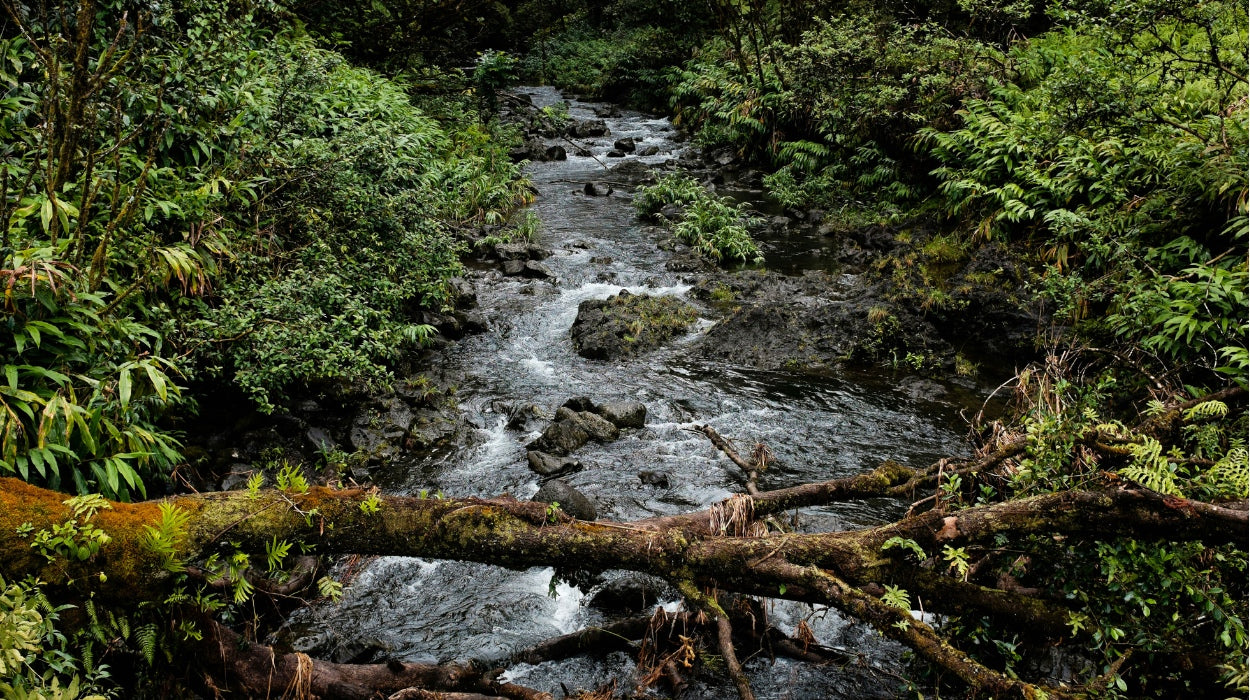Water Management: Protecting Our Most Precious Resource

We all have one thing in common: we live in a watershed. Whether we realize it or not, watersheds—and the life-giving water that flows through them—are the connections that bind us together. From hillsides and rivers to glaciers, basins, ponds, and lakes, these bodies of water are crucial to the survival of not just our species, but all the species we rely on.
Water is at the heart of health, sanitation, food production, migration, and habitat stability. It sustains our way of life, keeping us and the ecosystems we depend on thriving.
While we can’t control the rain, that doesn’t mean water management is a passive process. In fact, decades of poor water management have placed many communities and ecosystems in a vulnerable position.
Pollution
A clean and sanitary water supply is essential for the health of any community. Unfortunately, conventional farming practices have significantly contributed to watershed contamination. A form of hog farming known as Concentrated Animal Feeding Operations (CAFOs) is a major culprit. In these systems, hog waste is stored in large sewage lagoons, which are notorious for overflowing and contaminating local water systems.
Conventional farming also allows for the use of harmful chemicals and fertilizers which seep into the soil and run off into local streams and rivers, harming aquatic life.
Water Scarcity
Conventional agriculture also plays a role in exacerbating water scarcity in some regions. Farms that rely on monocultures—growing only one type of crop, like corn or soy—often have weak root systems that can’t effectively retain water. This makes them highly susceptible to drought conditions, requiring farmers to use excessive irrigation to compensate for the shortage.
How We’re Fighting Back
At Grass Roots, we take a different approach to water management. Our farmers plant cover crops that help soil retain more water, making our land more resilient to drought. By keeping soil in place with pasture cover, we prevent sediment from washing into nearby streams, protecting water quality.
Our rotational grazing practices also play a critical role in sustainable water management. By spreading manure evenly across the land, we ensure that biological processes can naturally build the soil, rather than allowing nutrients to run off into streams. The streams that flow through our farms are protected by riparian buffers—green spaces that not only cool the water and support aquatic life but also act as a natural filtration system within the watershed.
Studies have shown that rotational grazing can improve water retention in the soil by breaking it up, allowing water to soak in rather than running off and polluting nearby streams. In well-managed pasture-based systems, there’s a symbiotic relationship between animals and soil and water. As animals graze, they help till the soil, allowing nutrients in manure to be absorbed into the ground, promoting soil fertility, water retention, and long-term sustainability.
Best of all, our farmers use best management practices that eliminate the need to use harmful chemicals and fertilizers that can contaminate water supplies.
By supporting small, family-owned farms that prioritize sustainable practices, you’re helping preserve clean water for generations to come.
Happy Earth Month and happy eating!
To read more about how we manage our water, check out these blogs:



